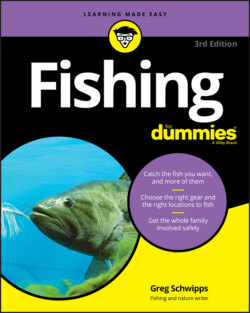Читать книгу Fishing For Dummies - Greg Schwipps - Страница 67
How to fish the water
ОглавлениеWhat makes a stream different from a pond is its current. Current influences a fish’s life about as much as a paycheck affects yours. Fish in streams make most of their decisions based on the current, so you need to understand how current works. Start with this nugget: Fish face into the current, so they can see food being swept downstream toward them. Therefore, you should present your lure or bait so that it looks natural: In other words, cast upstream of your target and retrieve your offering downstream. Now, this doesn’t mean always casting straight, or directly, upstream every time. You can still cast to different spots and at different angles. Just make sure that you are generally casting above your target — even if it’s at an angle. Fish often want to be near the current (to intercept food from it), but they don’t like expending more energy than necessary to maintain a position. For this reason, fish will often hide behind a large boulder or other obstruction, so they can be near the current but out of it. (You can find more on how to fish current in Chapter 17.)
Fishing large rivers is difficult without a boat, as fish are not spread out equally along the length of the river — most of the fish are usually in the riffles or the deeper parts of a pool. If you have shore access to one of these spots, you could be in luck. But on a large river, good holes might be miles apart. While a large river might call for a boat in order to be fished optimally, small streams are ideal for a canoe or kayak! (Read more about these vessels in Chapter 10.)
